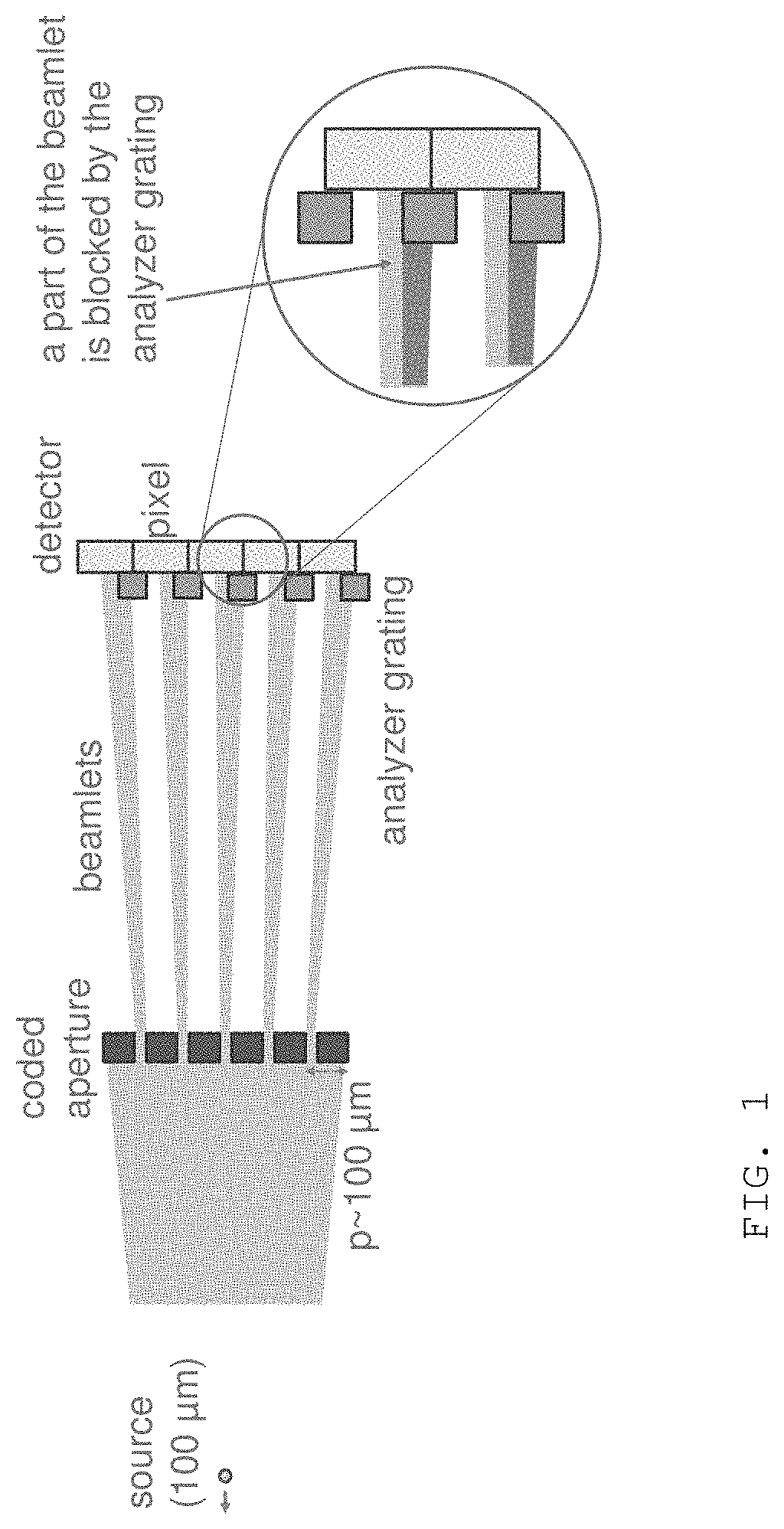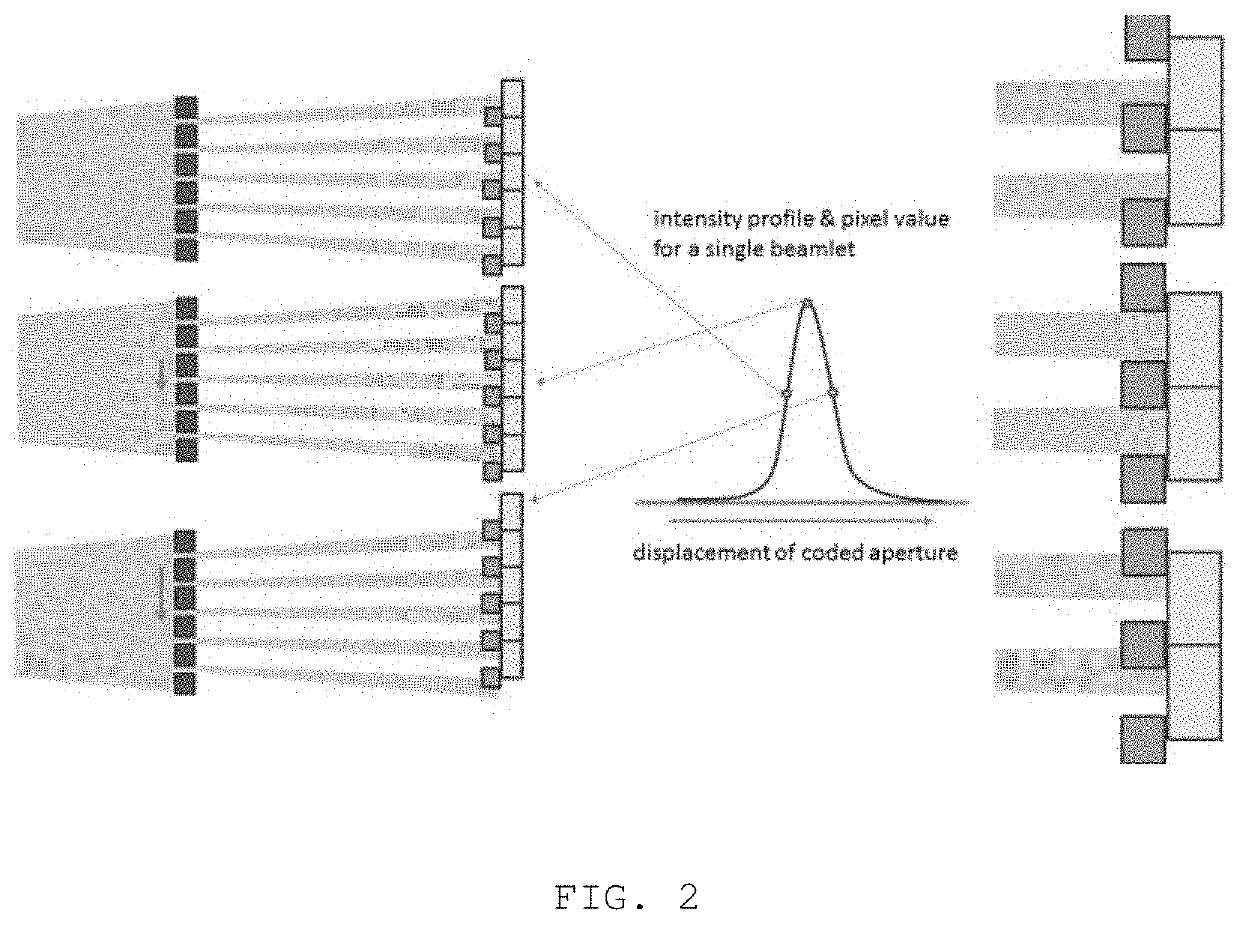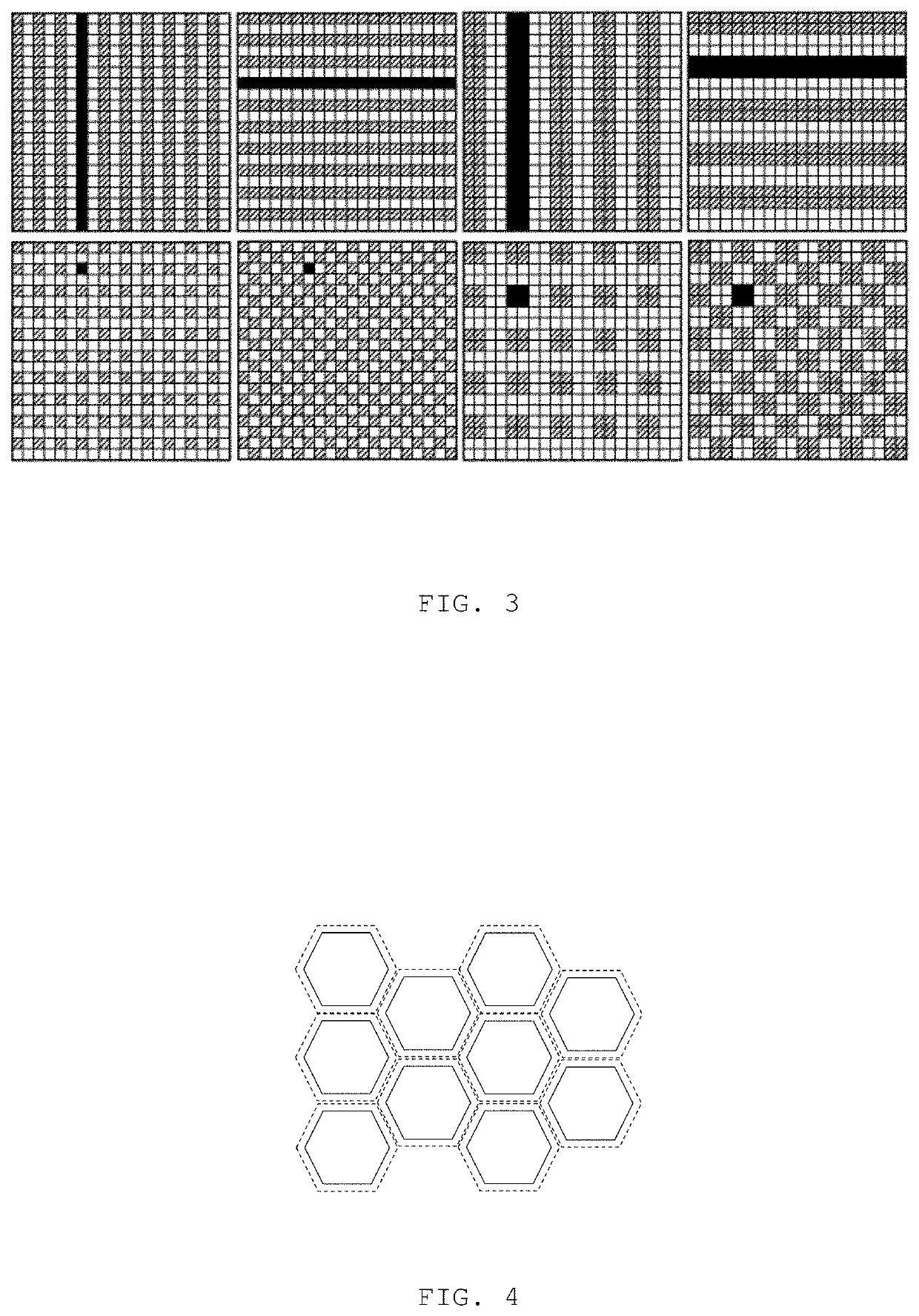Phase contrast imaging method
a phase contrast and imaging method technology, applied in the field of phase contrast imaging, can solve the problems of detectors not being usable for pci without analyzer grating, long exposure time, and higher quantum nois
- Summary
- Abstract
- Description
- Claims
- Application Information
AI Technical Summary
Benefits of technology
Problems solved by technology
Method used
Image
Examples
first embodiment
[0094]FIG. 7 illustrates the
[0095]The coded aperture is fixed and one full image is taken. To calculate the phase contrast image two successive columns are ignored for each of the three required sub-images (only the grouped pixels are used). The three sub-images are computed by shifting the group by one pixel. Obviously there is a part of the sample which is not illuminated.
second embodiment
[0096]The second embodiment is illustrated in FIG. 8.
[0097]In this embodiment the coded aperture is moved by ½ of the pitch divided by the magnification M (in this case 2 pixels / M) for a second exposure. The procedure to get a second phase contrast image is similar to the situation with only one exposure. The two phase images can be sorted together to get a full image—compare FIG. 6. Obviously now the complete sample is illuminated but the resolution is reduced because of the step of the movement of the coded aperture of ½ pitch / M (the maximum resolution would be achieved by moving the aperture by ¼ pitch / M).
third embodiment
[0098]The third embodiment is shown in FIG. 9.
[0099]In this embodiment the coded aperture is moved three times by ¼ of the virtual analyzer grating pitch divided by the magnification M (in this case 1 pixel / M) for a second; third & fourth exposure. The procedure to get a second; third & fourth phase contrast image is similar to the situation with only one exposure. The four phase images can be sorted together to get a full image—compare FIG. 6—now four instead of two sub-images are computed to get one full image.
[0100]Of course this can be extended to larger structures of the virtual grating (6; 8 . . . pixel wide structures) and an increased number of sub-images.
[0101]To improve the quality of the re-calculation of the phase, dark field and transmission image the following procedure is possible: Use the information of all 4 images at different physical positions of the coded aperture. Use 4 virtual sampling points for each position of the coded aperture. This improves the quality o...
PUM
 Login to View More
Login to View More Abstract
Description
Claims
Application Information
 Login to View More
Login to View More - R&D
- Intellectual Property
- Life Sciences
- Materials
- Tech Scout
- Unparalleled Data Quality
- Higher Quality Content
- 60% Fewer Hallucinations
Browse by: Latest US Patents, China's latest patents, Technical Efficacy Thesaurus, Application Domain, Technology Topic, Popular Technical Reports.
© 2025 PatSnap. All rights reserved.Legal|Privacy policy|Modern Slavery Act Transparency Statement|Sitemap|About US| Contact US: help@patsnap.com



